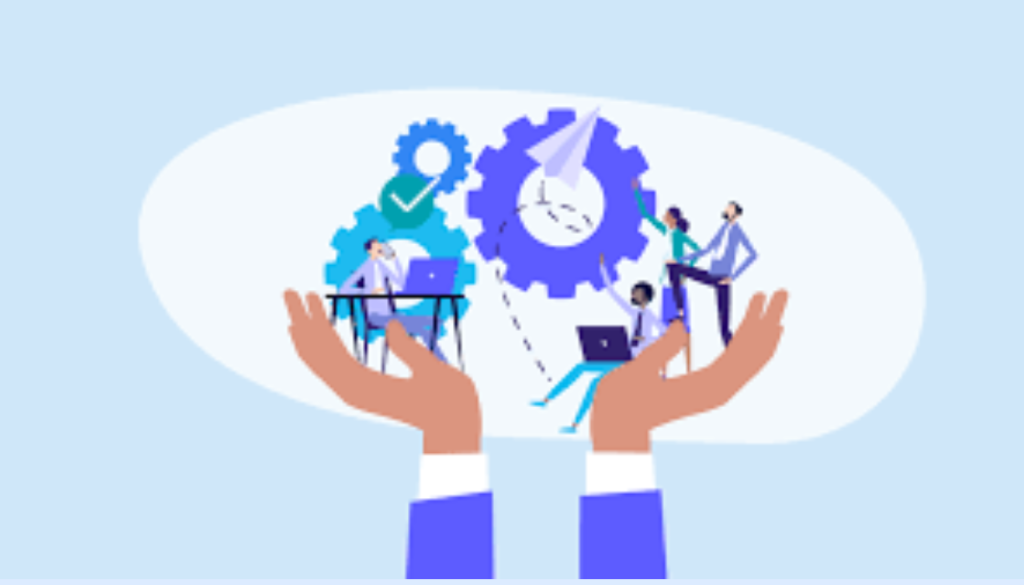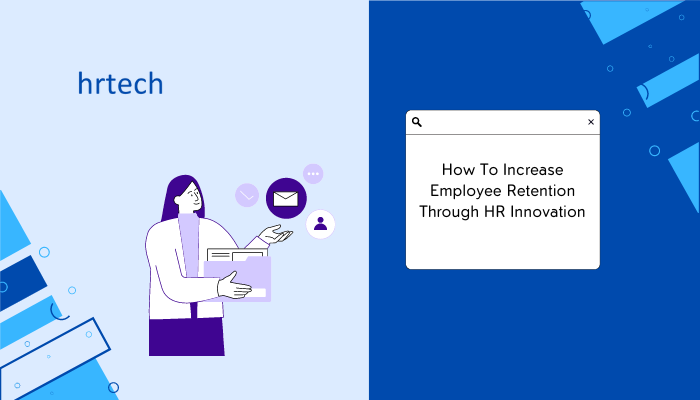Employee retention is a critical issue facing many organizations today. With unemployment rates falling and the job market heating up, top talent has plenty of options. Replacing employees can cost a company 150% or more of the departing employee’s salary. High turnover also negatively impacts productivity, profitability, workplace culture, and customer satisfaction.
The good news is that human resources (HR) innovations and new technologies are emerging that can help engage employees, meet their needs, and compel them to stay. As hr innovation continues accelerating, HR teams have more tools at their disposal to boost retention.
What Is Employee Retention Through HR Perspective?

Before jumping into solutions, it’s crucial to understand the issue at hand. A 2023 study by the Society for Human Resource Management (SHRM) showed that the average employee turnover rate across industries was about 15%. High turnover not only disrupts the workflow but also incurs substantial costs. This can be checked using an employee turnover calculator. Replacing an employee can cost up to 50-60% of the employee’s annual salary, with overall costs ranging anywhere from 90-200%, according to the Center for American Progress.
Understand Why Employees Leave:
To increase retention through HR innovation, you first need to understand why employees leave in the first place. Exit interviews and employee engagement surveys can provide insight into the specific drivers of turnover at your organization. Common reasons employees quit include:
- Lack of career development and advancement opportunities
- Insufficient pay and benefits
- Poor management and company leadership
- Minimal training and growth potential
- Lack of empowerment, responsibility, or challenges
- Unclear expectations and role confusion
- Week workplace culture and relationships
Once you identify the main causes behind turnover, you can pinpoint areas to focus innovative hr solutions.
Leveraging HR Innovation For Retention:

Personalized Employee Experience:
- What it is: Tailoring the work experience to meet individual employee needs.
- How HR Tech Helps: Tools like AI-driven analytics can track and analyze employee engagement and satisfaction, leading to more personalized career development plans.
Effective Onboarding Processes:
- What it is: Ensuring new hires are integrated effectively into the company.
- How HR Tech Helps: Onboarding software can streamline paperwork, provide virtual tours, and facilitate introductions, making new hires feel welcome and valued from day one.
Continuous Learning and Development:
- What it is: Offering opportunities for professional growth.
- How HR Tech Helps: E-learning platforms provide a range of courses and corporate training programs, enabling employees to upgrade their skills conveniently.
Recognition and Rewards Systems:
- What it is: Acknowledging and rewarding employee achievements.
- How HR Tech Helps: Gamification and recognition platforms can offer instant recognition and rewards, boosting morale and motivation.
Health and Well-being Programs:
- What it is: Promoting physical and mental health in the workplace.
- How HR Tech Helps: Wellness apps and platforms can track health metrics, offer virtual fitness classes, and provide resources for mental health, enhancing overall well-being.
Flexible Work Arrangements:
- What it is: Allowing employees to have flexible schedules and work locations.
- How HR Tech Helps: Tools that support remote work and flexible hours help employees maintain a work-life balance, crucial for long-term retention.
Data-Driven Decision Making:
- What it is: Using data to inform HR strategies.
- How HR Tech Helps: Analytics tools can predict turnover risks and provide insights into retention strategies, enabling proactive decision-making.
Offer Competitive Compensation And Benefits:
While not the only retention driver, compensation remains important to employees. Review your pay structures and benchmarks to ensure pay aligns with market rates. Consider boosting base pay, bonuses, equity offers, and benefit packages. With new HR systems, you can automate compensation management while providing transparency around pay.
You may also add unique benefits catered to your workforce’s needs, like paid parental leave, infertility treatment coverage, pet insurance, unlimited vacation, work-from-home stipends, and more. HR innovation around total rewards can make your offerings stand out.
Create Engaging Employee Experiences:
Today’s employees expect engaging, consumer-like experiences at work. HR innovation centers on mimicking the user experiences companies create for customers. The latest HR systems feature intuitive, app-like interfaces with self-service functionality, push notifications, and mobile access. These simple yet powerful user experiences keep employees informed, connected, and engaged.
You can also leverage innovation to improve processes like onboarding. According to HR innovation statistics, nearly 33% of job seekers have quit a job after a poor onboarding experience. New hires who go through structured onboarding are 58% more likely to stay at the company longer than three years. Interactive online portals, pre-boarding courses, peer mentors, and frequent check-ins are a few innovative approaches to onboarding today.
Invest In Career Development:
Employees do not want to stagnate; they want to continuously develop new skills and expand their capabilities. Unfortunately, a recent HR innovation report found 34% of employees feel stuck in their current role.
Reinforce Company Vision and Culture:
Employees need to feel connected to a higher purpose and positive work culture to stay engaged over time. Clearly and continuously communicate your organization’s vision, mission, values and culture. Highlight stories demonstrating those cultural values in action. Profile employee wins tied to the company vision monthly or quarterly.
Innovative intranet platforms also unite employees under a common culture with features like employee profiles, groups around shared interests, peer recognition programs, and spaces for employees to interact. Mobile apps further that community feel.
Empower Managers with Data and Insights:
Managers have an enormous influence over employee retention. Yet many lack visibility into factors impacting retention on their teams. HR innovation around people analytics guides managers with predictive data. Retention risk scoring models flag specific employees prone to leaving while prescribing targeted interventions to correct issues early.
Sentiment analysis parses feedback shared across the employee lifecycle, from onboarding surveys to exit interviews, to uncover broad retention themes. Such HR innovation empowers managers to course-correct in real-time based on employee signals.
Prioritize Flexibility, Wellbeing, and DEI:
Today’s workforce expects greater flexibility, wellbeing support, and diversity, equity and inclusion (DEI) from employers. Rethink traditional policies, programs and mindsets to meet these needs.
With hybrid work models, provide schedule flexibility and autonomy over when and where work gets done. Tools like virtual whiteboards, cloud collaboration software, HR chatbots, and team messaging apps support seamless remote teamwork.
Mental health, financial wellness, mindfulness apps and other wellbeing perks demonstrate your commitment to whole-person employee support. Extend your DEI programs beyond recruiting into ongoing education, mentorship, ERGs, and belonging measures tied to retention.
Listen and Act:
Leverage technology to create self-driven career development opportunities. Learning experience platforms (LXPs) allow employees to take online courses, develop skills at their own pace, explore career paths, and more. LXPs empower continuous learning while giving HR insight into worker capabilities and future needs.
You might also implement skills-based lateral career moves, internal gigs allowing employees to work on special short-term projects, manager exchanges to let leaders try different roles, and automated coaching around career growth opportunities matched to employee strengths, skills, and interests.




